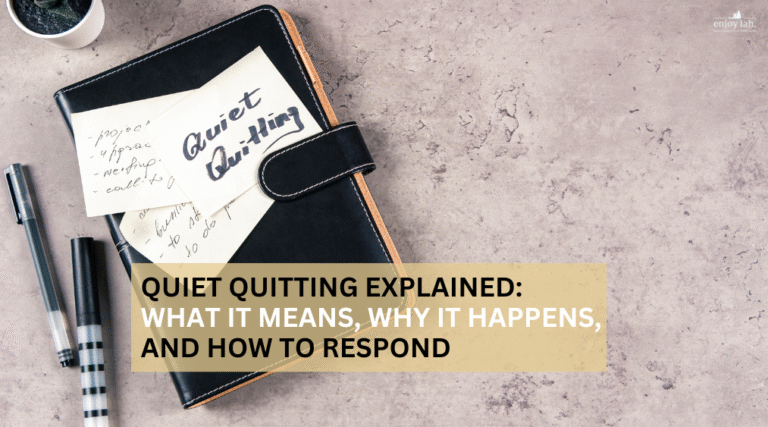Some people still think selling skills is needed only if you are a salesperson.
Without doubt, selling skills are a must for all Salespeople. However, if you would like to zoom out and observe, you would have realised that you did “sell something” during your long span of career.
Where selling skills are concerned, it means what it meant literally to a Salesperson. But to the non-salesperson, selling skills have become the backbone of influence, career longevity, and even personal satisfaction.
As an experienced pro, moving from a Technical role to a Business role, I’ve witnessed firsthand how the ability to persuade, articulate value, and handle resistance play such an important role in many situations, ranging from strategic engagement, advocating a new culture, to building a new network. And in every one of these situations, it demands good selling skills.
Moreover, with the rapid shifts in technology and the entering of the AI age, selling skills have become an important skill to stack for Gen X.
Why Selling Skills Still Matter — Especially for Gen X
To begin with, our professional world has shifted profoundly. In modern workplaces, influence often holds equal weight to technical mastery. As a result, selling skills are now indispensable, particularly for Gen X professionals approaching or navigating midlife transitions.
For instance, the market is in a much tougher competitive dynamic. Where the competition is fierce, agility is very much needed to respond. To strive for agility, teams need quick strategic alignment and faster decisioning. For Gen Xers, you may in a position to lead, to rally teams and secure buy-in from diverse stakeholders. Hence, this is where you will need to demonstrate tremendous selling skills.
Consider McKinsey’s research showing that communication and persuasion rank among the top three soft skills in demand across all industries. Ignoring selling skills is no longer an option.
In addition, with a tougher competitive marketplace where there may be layoffs, economic shifts or industry disruptions, being well-stacked with selling skills can be the difference between thriving or surviving.
Selling Skills: Part of Life Beyond Sales Roles
Interestingly, if you look back on your career, you will be bound to find some moments where you need your selling skills.
For the technical folks like me, for example, we often needed to sell new ideas or new processes to management. As a designer, I had often needed to pitch creative concepts to my team and management, who may not immediately see the value. And in recent times, those in the IT departments will try very hard to sell cybersecurity investments to try to safeguard the company’s business continuity. (Not easy! Until things happen! Ouch!)

As a matter of fact, as Gen X progresses into senior positions, responsibilities inevitably expand beyond pure technical execution. Today, most Gen Xers may be in Managerial positions (Yes, the PMET!). In becoming leaders, we must sell budget proposals, strategic plans, and change initiatives. Consequently, those without solid selling skills may find themselves sidelined, even if their technical acumen remains unparalleled.
And for Gen X, who opted to become entrepreneurs, the need for selling skills becomes even clearer. Whether launching a side hustle or building a startup, founders need to sell. Without the ability to sell their vision, products, or services, businesses simply cannot survive.
A Simple Framework for Mastering Selling Skills
One common challenge for Gen X professionals venturing into selling is knowing where to start. And based on my own experience of evolving from a technical role to a business role, I would say that selling skills is not a complicated skill to learn.
Here’s a practical framework that you can use as a reference:
1. Paint the Big Picture
Begin by learning the ability to paint the big picture is very important. Explain market trends, shifting customer expectations, or industry disruptions. For example:
“With AI rapidly transforming how companies operate, businesses can’t afford slow manual processes anymore.”
2. Pain Points
Every stakeholder will have their pain points, concerns, or KPIs to take care. Identify the specific frustrations or problems, or stakes that matter to your audience. Make it relatable and concrete.
Typically, stakeholder want to feel that their concerns are being heard.
“Many teams are overwhelmed by data yet struggle to extract actionable insights quickly.”
3. Solution
Present your idea, service, or recommendation as the answer to these pain points. Keep it concise.
“That’s why we developed a solution that automates analysis and delivers insights in real-time.”
4. Use Cases or Testimonials
Sell credibility. Support your pitch with real-life examples or credible testimonials. Stories bring your message to life.
“Last quarter, Company X reduced decision-making time by 40% after adopting our approach.”
5. Call to Action (CTA)
Finally, tell your audience what you want them to do next. Be clear and confident.
“Let’s schedule a 30-minute call to explore how this could work for the team.”
This framework makes selling skills strategic and provides a repeatable structure. Indeed, Harvard Business Review found structured pitches increase listener retention by up to 40%, proving that a clear framework is half the battle in effective communication.
How to Start Learning Selling Skills — Even If You’re Not a “Natural”
Understandably, many Gen Xers may be concerned and believe they aren’t “natural salespeople.” Guess what? I like to argue that everyone is born with selling skills! Believe it or not, you will realise you did try to influence things in moments of your life.
What you need is to acknowledge that you need to “sell something” when the moment arises. When it happens, you can adopt the strategic selling framework that I listed above. The framework will help you to derive the selling plan.

Here’s my tips:
The most important thing is to understand the pain points. To do that, a “pre-sales” phase is needed. Whether it is research or what the industry typically calls “fact-finding or discovery”. In this phase, you need listening skills to understand stakeholder pain points.
Just remember, without addressing any pain points or concerns, there will not be any buy-ins.
Once you understand the pain points, it’s about preparing your solution to solve these pain points. And in pitching, it is about showmanship where storytelling skill is an important subset skills to learn as part of selling skills.
Just imagine this…
I often liken selling to competing in a boxing match. As a boxer, you do not go up the ring just to box without a plan. You will be strategic, waiting for the right moment to jab at the weakness of the opponent. In this case, the weakness is the pain points of your audience!
Objection Handling: The Real Test of Selling Skills
As part of selling skills, we need to talk about objection handling. For some reason, many people tend to wilt under objection. The “NO” is part of the process.
Mentally, the “NO” affected a lot of people. However, in reality, there are different sizes of “NO”. As long as the big “NO” does not surface, then objections are simply requests for more information. They mean the listener is engaged.

Here’s a simple method to handle objections gracefully:
- Stay calm — avoid becoming defensive.
- Acknowledge the concern — show you understand their perspective.
- Ask clarifying questions — dig deeper to understand true hesitation.
- Provide proof or examples — use use cases or testimonials.
- Check for alignment — confirm that your answer resolves their concern.
For Gen X professionals, typical workplace objections might include:
- “We’ve always done it this way.”
- “There’s no budget.”
- “I’m not sure leadership will approve.”
Here’s my tips:
“NO” comes in different sizes. Accept “NO” as part of the process. Every “NO” will make your solution plan stronger!
Selling Motivation: Overcoming Fear and Resistance
Naturally, non-salespeople tend to hate selling. They often frame their mind to feel like the team or the audience does not trust me, hence I need to sell. I think it’s important to reframe this mindset! Instead, selling brings clarity, accountability, and better governance!
Furthermore, selling, when done ethically, is simply the act of helping people see value. As Daniel Pink argues in his book “To Sell Is Human,” everyone is in sales because we’re constantly trying to move others, whether it’s our kids, our colleagues, or our clients.
To build confidence:
- Reframe selling as helping.
- Focus on delivering value, not extracting it.
- Celebrate small wins, like persuading a team to try a new approach.
Ultimately, mastering selling skills opens doors to greater influence, career pivots, and new business opportunities — all while staying true to who you are.
Public Speaking as a Critical Part of Selling Skills
Equally important, public speaking is a core component of selling skills. It amplifies your ability to persuade larger audiences, whether pitching to senior leadership or presenting at an industry event. Personally, public speaking to me is about pitching a clear, simple, but powerful message that can resonate with the audience.
For Gen Xers feeling rusty or unfamiliar, start small:
- Speak at team meetings.
- Record yourself for practice.
- Learn simple storytelling frameworks like the “Problem-Solution-Result” model.
Remember, public speaking isn’t about perfection — it’s about presence. Indeed, strong selling skills combined with clear public speaking can transform your professional reputation.
Recommended Help to Master Selling Skills
If you’re serious about developing your selling skills, these books are invaluable:
- “To Sell Is Human” — Daniel Pink
Why everyone sells and how to do it ethically and effectively. - “Influence” — Robert Cialdini
Psychological principles behind why people say “yes.” - “Pitch Anything” — Oren Klaff
How to frame your pitch to hold attention. - “Never Split the Difference” — Chris Voss
Negotiation tactics from an ex-FBI hostage negotiator, highly relevant to handling objections.
Here’s my pro tips for public speaking:
I always watch the old footage of Steve Jobs pitching the iPhone on the stage. He’s the best at powerful and simple messaging.
These resources can accelerate your journey in mastering selling skills for professional and personal success.
Final Thoughts: For Gen X, Selling Skills = Survival
My take is that selling skills are no longer optional. They are crucial tools for influence, resilience, and personal growth. Whether you’re pitching your ideas in a boardroom, pitching yourself for a promotion, or launching a new business, the principles remain the same.
Gen X possesses wisdom, experience, and rich stories — all necessary ingredients for successful selling, and all you need is to cook them!
Start small, build confidence, and remember that in a rapidly shifting world, your ability to sell might be your most valuable asset. Because for Gen X — and for anyone seeking relevance in this fast-changing age — selling skills are truly career survival skills.








